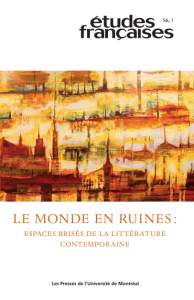Media Studies and Latin America
This course will offer a panoramic examination of theories and practices of media in Latin America. We will investigate questions of production and consumption of culture, public and private spheres, print and digital culture, technology, and globalization. We will examine the concept of media within Latin American contexts and within global theorizations, expanding the realms of media to include print, photography, broadcast, cinema, performance and digital forms. We will discuss distinctions of “high” and “low” culture, quotidian experiences, spectacle, propaganda, representation, and power relations. We will study concepts of mediations, function and effect within specific Latin American case studies, particularly in relation to historical, political, and social dynamics. We will explore different theoretical perspectives on the role of media in Latin America, including examinations of the media impact on values, identities, behaviors, empire, imperialism, populism, authoritarianism, and recent protests. We will analyze specific media materials, and explore the meaning of changes that occur when contextually anchored narratives are adapted into different media forms. In addition, we will study interconnections of class, race, gender, and the environment as manifested in the production and consumption of media, and in works that, directly or indirectly, address debates on media formations in Latin America within a global context.
Required readings (selections from):
- Appadurai, Arjun. Modernity at Large: Cultural Dimensions of Globalization (1996)
- Benjamin, Walter. “The Work of Art in the Age of Mechanical Reproduction.” In Illuminations (1969)
- Debord, Guy. “The Commodity as Spectacle.” In Society of the Spectacle (1977)
- Dorfman, Ariel and Armand Mattelart. Para leer al Pato Donald (1971)
- García Canclini, Néstor. Culturas híbridas. Estrategias para entrar y salir de la modernidad (1990)
- Habermas, Jurgen. “The Public Sphere.” In Critical Theory and Society (1989)
- Hall, Stuart. “Encoding/Decoding.” In Culture, Media, Language (1980)
- hooks, bell. “Eating the Other.” In Black Looks: Race and Representation (1992)
- Martín-Barbero, Jésus. De los medios a las mediaciones (1987); Oficio de cartógrafo: Travesías latinoamericanas de la comunicación en la cultura (2002); De la comunicación a la cultura (2013)
- McLuhan, Marshall. Understanding Media (1964)
- Monsiváis, Carlos. El Laberinto, el conjuro y la ventana. Itinerarios para mirar la ciudad (2011)
- Piccato, Pablo. “The public sphere in Latin America” (2010)
- Rama, Ángel. La ciudad letrada (1984)
- Richard, Nelly. Campos cruzados. Crítica cultural, latinoamericanismo y saberes al borde (2009)
- Sarlo, Beatriz. La imaginación técnica: Sueños modernos de la cultura argentina (1992); La intimidad pública (2018)
- Shohat, Ella and Robert Stam. Unthinking Eurocentrism: Multiculturalism and the Media (1994)
- Sontag, Susan. On Photography (1977)
- Süssekind, Flora. Cinematógrafo de letras (1987)
- Walsh, Rodolfo. “Carta abierta de un escritor a la Junta Militar” (1977)
- Williams, Raymond. Television: Technology and Cultural Form (1974); “Culture”
Recommended readings:
- The Craft of Research by Wayne Booth, Colomb and Williams, 2008 or 2016
- MLA Handbook for Writers of Research Papers, 2016
Language of instruction: Spanish
 Dr. Vincent Gélinas-Lemaire is excited to announce the recent publication of his edited volume on the poetics of ruins in contemporary literature.
Dr. Vincent Gélinas-Lemaire is excited to announce the recent publication of his edited volume on the poetics of ruins in contemporary literature.